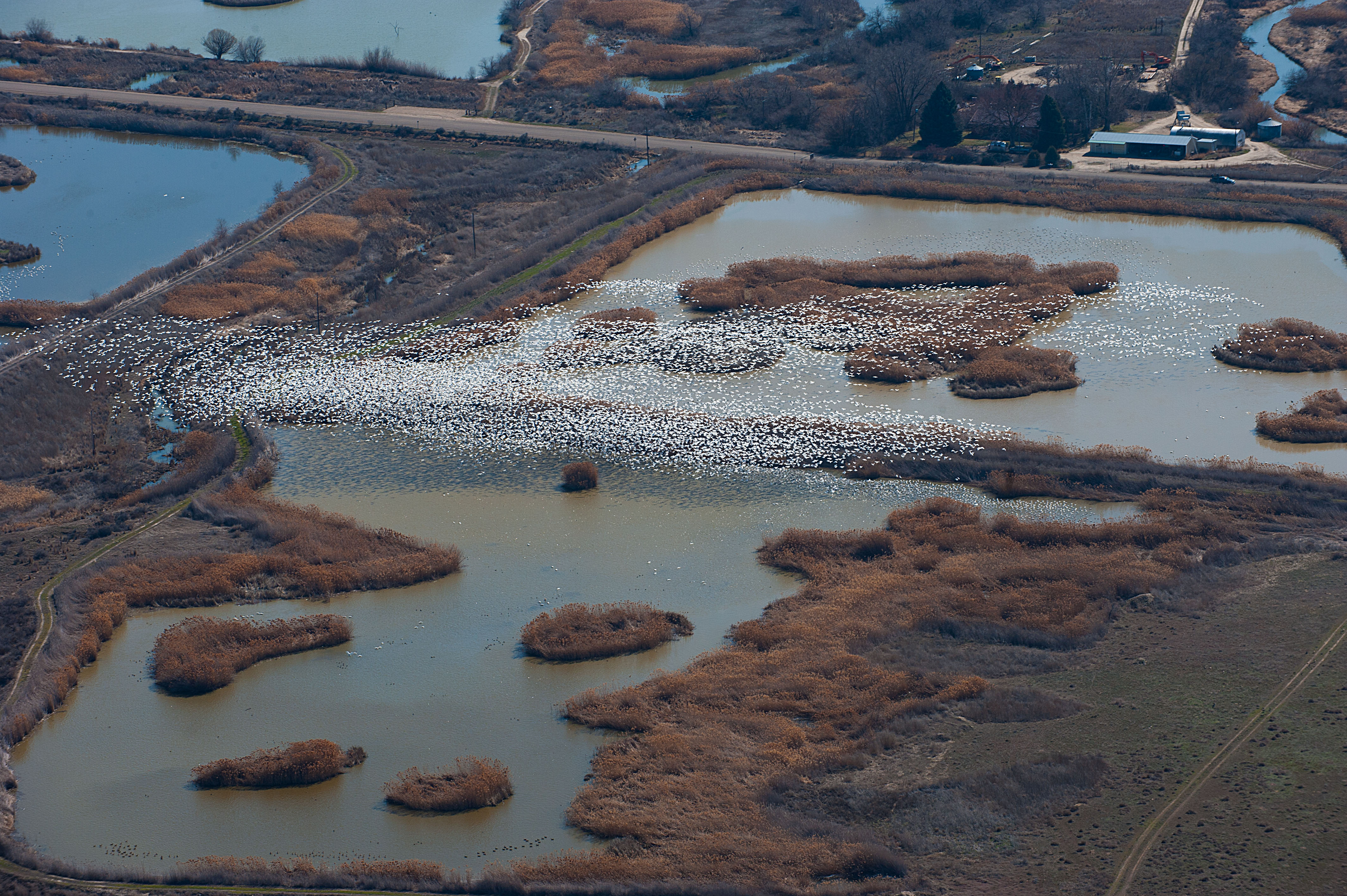A feathered fireworks display is currently happening Fort Boise Wildlife Management Area near Parma, as tens of thousands of snow geese use the WMA as a stopover on their northward spring migration.

Massive spring snow goose migration is on at Fort Boise WMA

The 1,630-acre WMA is owned and operated by Fish and Game and funded by hunters, who flock to the area during fall and winter for waterfowl and upland game bird hunting. But starting in late February and running through March, visitors come armed with cameras and binoculars instead of shotguns to witness one of the most massive wildlife migrations in Southwest Idaho.
“This is our main time of year for wildlife watching, and the snow geese are a big attraction,” said Fish and Game’s WMA manager Tyler Archibald. “As of March 16, we have about 30,000 snow geese using the complex, so it’s a great time to come see the spectacle.”

Up to 60,000 snow geese, white-fronted geese and other waterfowl use the WMA as a stopover on their northern flights. The birds typically leave warmer climates ranging from Baja Mexico to northern California and follow the snow line north. With southwest Idaho sitting at the base of Central Idaho’s snow-packed mountains, the birds rest and wait for about six weeks before continuing and heading as far north as Siberia.
The massive flocks typically operate on a reliable schedule, leaving the WMA at sunrise to fly to nearby fields to feed. By mid-morning, they return in waves and land on ponds at the WMA. Their arrival is a cross between an aerial ballet and a dog fight as thousands of geese spiral out of the sky in a chaotic mass. The excitement is accompanied by a soundtrack that seems too crazy-loud and frenetic to be coming from birds.

Wildlife watchers can get a bird's eye view thanks to an elevated viewing platform that puts people 15 feet off the ground and provides an unimpeded look of the adjacent ponds, some of which are blocked by dikes when viewed at ground level. Space is limited, so watchers are asked to be courteous and limit their time at viewing windows when others are waiting.
Due to the popularity of the platform, there may be more people than room to stand in it, especially on weekends. Archibald said etiquette is to take turns in the platform, but there are other places to see the flocks landing at Fort Boise, as well as the nearby Roswell Marsh Wildlife Habitat Area. Visitors should be aware that much of the interior of the Fort Boise, as well as Roswell Marsh, is closed from February 1 through July 31 to protect nesting birds.

People interested in watching the large bird migration, especially the huge flocks of snow geese, also shouldn’t wait too long. The birds operate on their own schedule, but they’re usually continuing north by early April, and the ponds can quickly go from brimming with snow geese to void of them.
“It’s sudden,” Archibald said. “When they decide to go, they’re gone.”
